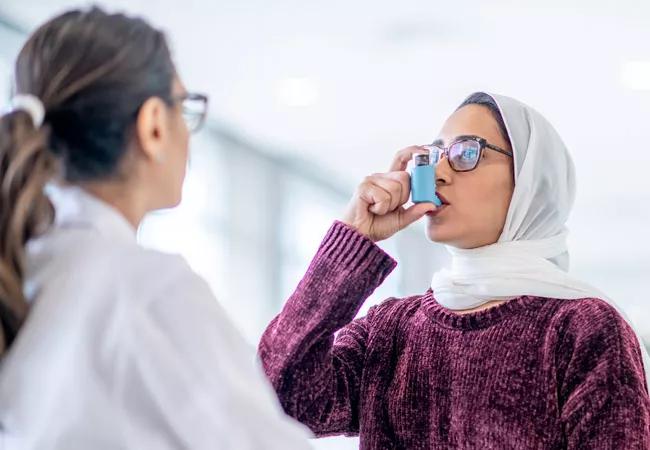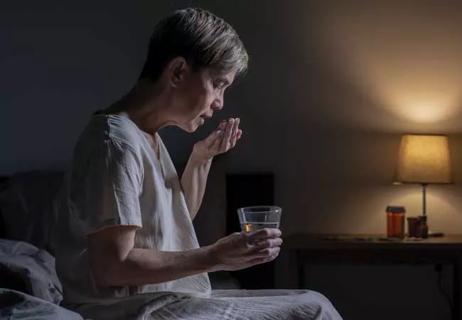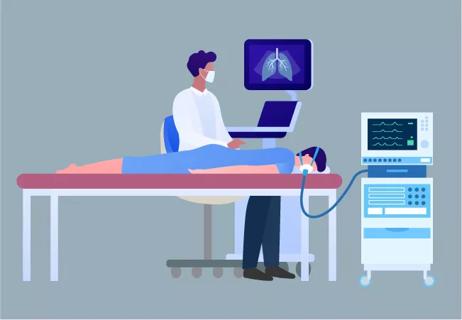Because of the associated symptoms, a multidisciplinary approach to care is essential

Written by Don Decoy, MD, and Rachel Taliercio, DO
Advertisement
Cleveland Clinic is a non-profit academic medical center. Advertising on our site helps support our mission. We do not endorse non-Cleveland Clinic products or services. Policy
Post-COVID Syndrome (PCS) includes a variety of conditions and symptoms, and the incidence of explicit signs and symptoms may vary according to the severity, duration and nature of the acute infections. Fatigue represents the most common concern in patients with PCS and 17% to 72% of critically ill patients with COVID-19 present with the symptom. Respiratory symptoms are common in PCS patients with PCS, and dyspnea is often the most prevalent. Pulmonary complications have been reported in SARS-CoV-2 survivors following acute pneumonia with most patients experiencing mild to moderate respiratory complications, and approximately 5% of patients develop adult respiratory distress syndrome (ARDS).1 Breathlessness and cough are noted in a substantial proportion of patients with long COVID-19 and may or may not correlate with prior COVID-19 severity. Other lung-related manifestations can include prolonged need for supplemental oxygen and difficulty liberating patients from mechanical ventilation.
A majority of patients who survive severe COVID-19 illness have persistent symptoms. Physiologic abnormalities are common as well. In one survivor study, 42% of patients evaluated in clinic three months after hospital discharge had a significant reduction in diffusion capacity of the lung on pulmonary function testing, and this finding is the most commonly reported physiological lung impairment after acute COVID-19.2 Decrease in diffusion capacity appears to be related to the severity of acute illness and can also be detected in patients with moderate illness and normal lung function. Roughly half of COVID-19 survivors have persistent and pulmonary radiological changes for up to six months following the acute illness. The radiological abnormalities include ground-glass opacities, signs of reticulation, including coarse fibrous bands, bronchiectasis and pulmonary fibrosis, and the abnormalities appear to be related to greater activity of acute COVID-19 syndrome.3,4
Advertisement
Chronic cough can accompany dyspnea in patients with post-COVID-19 syndrome. While radiographic changes, including lung fibrosis, can cause chronic cough and dyspnea, respiratory symptoms may persist in the absence of radiographic abnormalities and lung function impairment. Results from a cohort prospective study in the U.K. in 2020 revealed that respiratory symptoms may persist in patients with post-COVID syndrome even with improvement and normalization of pulmonary function and resolution of radiological abnormalities.5 This suggests that other pathophysiological mechanisms might be responsible for dyspnea in patients with PCS.
All patients with persistent dyspnea following a COVID-19 illness should undergo pulmonary function testing and high-resolution chest imaging.6 Evidence of variable or fixed airflow obstruction can be managed with a trial of inhaled steroid and long-acting bronchodilator therapy. If patients do not have a clinical response to inhaled controller therapy, systemic steroids can be prescribed. It is important to minimize the morbidity of therapy with systemic steroids by prescribing lower doses and shorter courses.7 Echocardiogram and ventilation/perfusion lung scanning can be ordered in the evaluation of persistent dyspnea, particularly if the pulmonary evaluation is unrevealing. Invasive cardiopulmonary exercise testing can be performed if the pulmonary and cardiac evaluations are unremarkable. For unexplained dyspnea following COVID-19 illness, we recommend referral to pulmonary rehabilitation. Patients can also be referred to speech-language pathologists for the evaluation of dysfunctional breathing patterns. This condition can be successfully managed with respiratory retraining therapy.
Advertisement
After evaluating the patient for ongoing dyspnea, cardiopulmonary exercise testing (CPET) may identify the etiology of symptoms and those who may benefit from pulmonary or physical rehabilitation and functional medicine evaluation (e.g., patients with deconditioning, submaximal heart rate or dysfunctional breathing). This test is often helpful for classifying disease severity for treatment decisions and in the differential diagnosis of exercise intolerance and symptoms of dyspnea and fatigue.8 The category of cause can be ventilatory, cardiac, pulmonary vascular, metabolic, or deconditioning. Pulmonary rehabilitation may benefit those patients with mild symptoms (patients without an oxygen requirement and no cardiac etiology) as well as those with moderate to severe symptoms having persistent desaturations < 92%, a new requirement for supplemental oxygen, or other concerning respiratory symptoms.
Patients with post-COVID-19 dyspnea require a multidisciplinary team approach to ascertain the cause of the patient’s symptoms, and the pulmonary evaluation is critical to establishing a diagnosis and treatment plan. Despite the downward trend of COVID-19 numbers, patients with post-COVID dyspnea will continue to present as a diagnostic and therapeutic challenge for months and years to come.
References
Advertisement
Advertisement

Pearls to reduce the strain of RSV, COVID-19 and influenza infections

No effect on symptom severity or disability, and low prevalence of long COVID

Dynamic modeling improves the accuracy of outcome predictions for ICU patients

A review of IDSA and NIH guidelines

Study sheds light on how clinicians addressed their patients’ pain and insomnia during the pandemic

While logistical questions remain about RPM, its benefits for both patients and caregivers are abundantly clear

Cleveland Clinic pulmonologists share a framework for how to implement effective clinical protocols to standardize evaluation and management of complex acute respiratory distress syndrome

Diagnosing the cause of a chronic cough can be challenging and timely, but multidisciplinary collaboration and the development of new treatments are improving the process